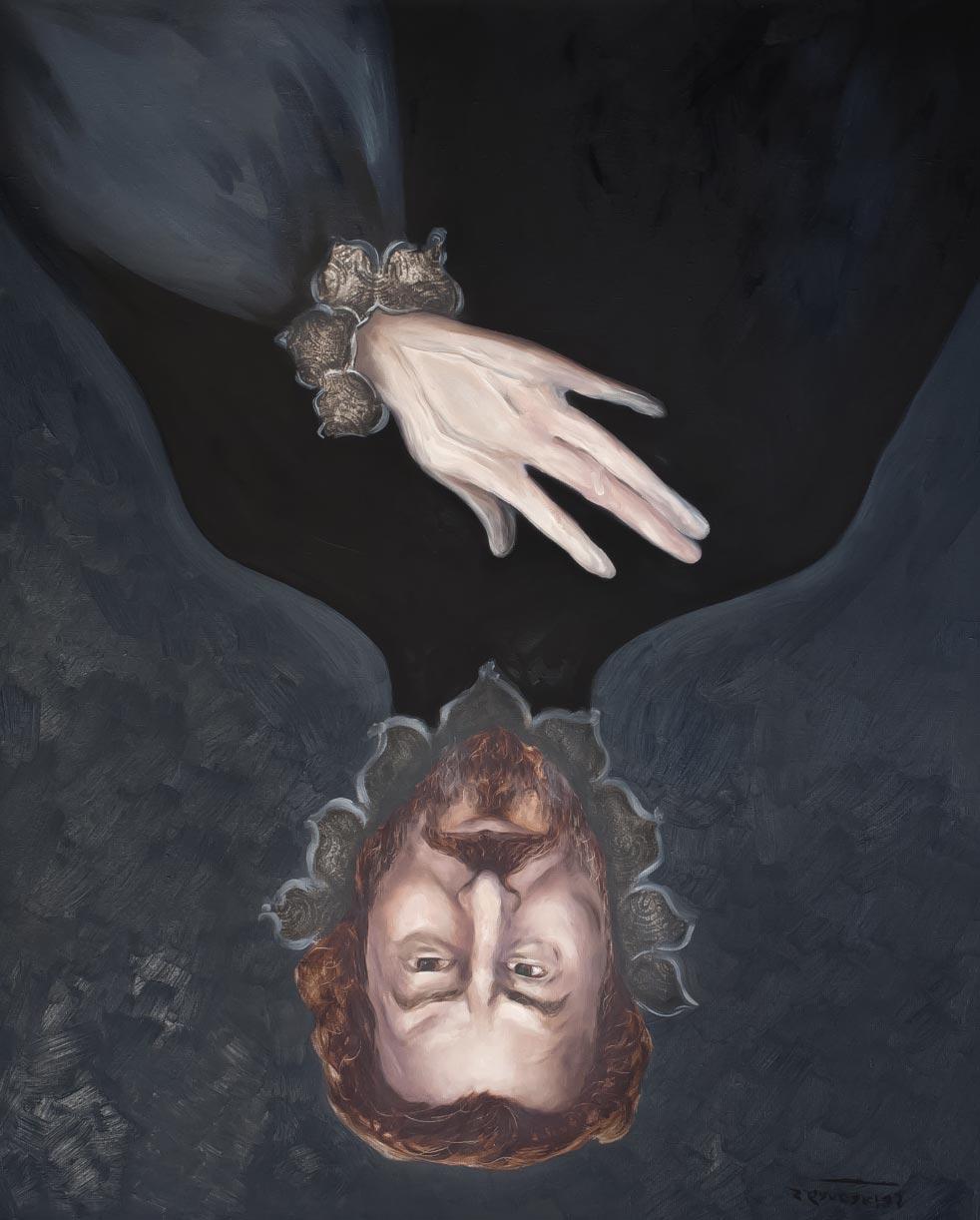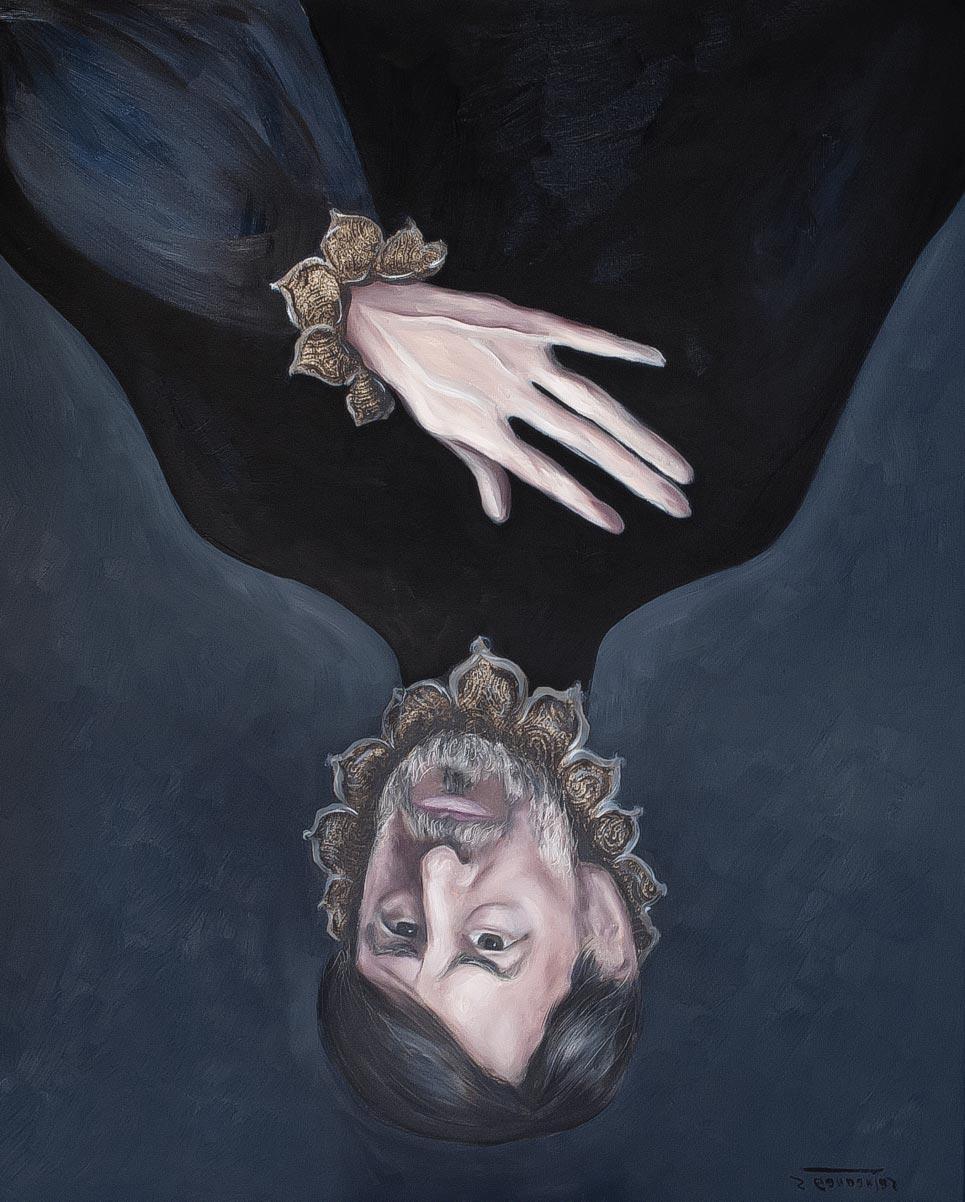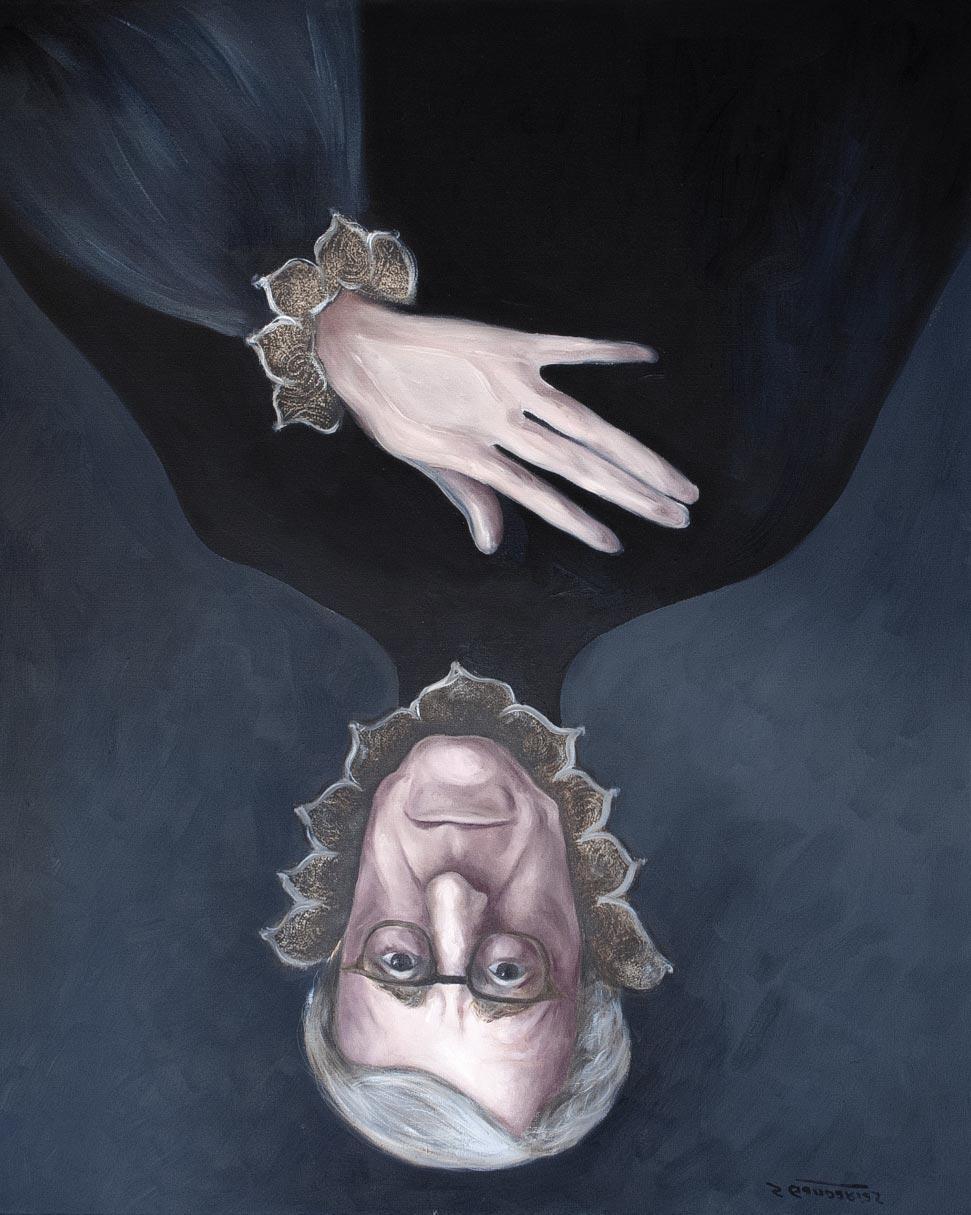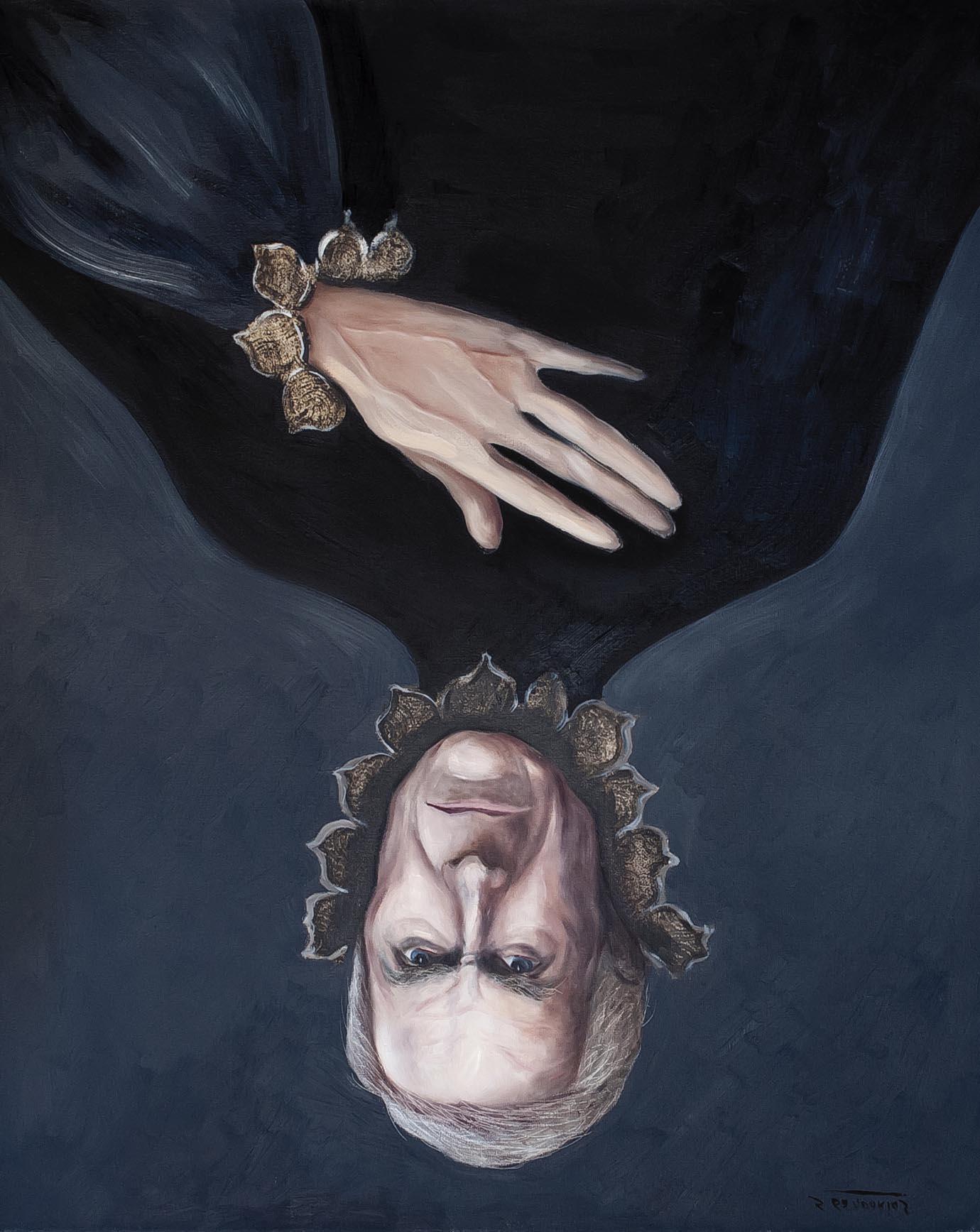
6 minute read
Álvarez Soldevilla Candela
Candela Álvarez Soldevilla
The Just
What does it mean to portray contemporary characters with a doublet and a ruff? What message did our beloved and admired Sofia shared with us through this gallery of portraits? I think that her voice, as if it was guiding us among her paintings, sounds clear: she is telling us that these are men and women of our time who she considers to be clothed with a special dignity. But she warns us right away that this is not a closed and exclusive gallery. This gallery does not have any exclusionary nuance. Not being part of this gallery does not mean that you can’t be equal in dignity. Absolutely not!
How clear does her voice sound in front each of these portraits! Before the first of them, before the portrait of Rilke, she is telling us: "Look at the highest poet that humanity has given in our time. Rilke is a man who sacrificed everything to do something as light and as intangible as a handful of poems. He suffered from loneliness, incomprehension, and also hunger and restlessness. But he knew he had a duty to fulfill, and he did. He never wanted honors or distinctions. These were things too apparent to a man who did not live in appearance, but in essence. Once he felt that his duty had been fulfilled, he let himself die. It does not mean that he did not love life –he loved it a lot– but death was already justified in a biblical sense. He was a just man, a faithful accomplice of his duty. "
This beautiful gesture of placing the hand on the heart is repeated in all of Sofia’s portraits. All the portrayed are looking at us with their hand on
Los justos
¿Qué significa retratar con jubón y gola a personajes contemporáneos? ¿Qué mensaje ha querido transmitirnos nuestra querida y admirada Sofía con esta galería de retratos? Creo que su voz, como si fuera guiándonos ella misma entre sus cuadros, suena con claridad: nos dice que estos son los hombres y las mujeres de nuestro tiempo que ella considera revestidos de especial dignidad. Pero nos advierte enseguida que esta no es una galería cerrada, exclusiva. La galería no tiene ningún matiz excluyente. No formar parte de esta galería no significa que no pueda tenerse igual dignidad. En absoluto.
¡Pero qué clara suena su voz ante cada uno de estos retratos! Ante el primero de ellos, ante el retrato de Rilke, nos dice: “Mirad al más alto poeta que ha dado la humanidad en nuestro tiempo. Un hombre que lo sacrificó todo por hacer algo tan leve, tan intangible, como un puñado de poemas. Sufrió soledad, incomprensión, y también hambre y desasosiego. Pero sabía que tenía un deber que cumplir, y lo hizo. No quiso nunca honores ni distinciones. Eso eran cosas demasiado aparentes para un hombre que no vivió en la apariencia, sino en la esencia. Cuando sintió que su deber estaba cumplido, se dejó morir. No es que no amara la vida –la amaba, y mucho–, es que ya estaba, en sentido bíblico, justificado. Era un justo, un fiel cumplidor de su deber”.
Ese hermoso gesto de colocar la mano sobre el corazón se repite en todos los retratos de Sofía. Todos los retratados están mirándonos con la mano
Candela Alvarez Soldevilla is a Spanish businesswoman, philanthropist and art collector. Candela Alvarez Soldevilla es una empresaria, filántropa y coleccionista española
#39 El Caballero Julian Schnabel Óleo sobre lienzo / 100 x 81 cm. / 2015
their hearts. Everyone looks straight, to our eyes. Is there a more sincere, more authentic gesture? Can people lie when they accompany their words with that gesture? Can they deceive us? Can they even have the intention to deceive us?
This gallery of portraits could carry a generic title: The Honorable. Or maybe: The Nobles of Spirit. Or even: The Just. The gallery could end with the verse of Borges concluding the poem entitled just like The Just: "These people, who ignore themselves, are saving the world." Because this is the grandeur of all these portrayed: they do not know - and if they were told, they would deny it - that they are the ones who are saving our world. Without any of them our world would be poorer, it would have less soul.
One must hurry up to say a lot of things about the knight with the hand on his chest that Sofia flatly denies. It has been written that he is a distant and cold knobleman, who arches his eyebrows in a gesture of superiority... Just in case, Sofía softened its gesture. Have you noticed that all the noblemen with the hand on the chest portrayed by Sofia have a warmer look than El Greco’s Nobleman? The reason is very clear: the latter is an archetype. He wanted to portray the essence of the Spanish nobleman of the last years of the sixteenth century: a man who feels safe, because he is part of the greatest empire that History has ever known. The Noblemen of Sofia are, deep down in their hearts, helpless beings, as we all are, since humanity has shown that it can destroy itself with world wars, extermination camps and chemical weapons. Furthermore, Sofia’s noblemen are not archetypes: they are concrete and precise human beings. They are friends of Sofia. en el corazón. Todos nos miran de frente, a los ojos. ¿Cabe un gesto más sincero, más auténtico? ¿Puede mentir alguien que acompaña sus palabras con ese gesto? ¿Puede engañarnos? ¿Puede querer engañarnos?
Esta galería de retratos podría llevar un título genérico: Los dignos. O quizá: Los nobles de espíritu. O incluso: Los justos. La galería podría terminar con el verso de Borges con que concluye el poema titulado precisamente así, Los justos: “Esas personas, que se ignoran, están salvando el mundo”. Porque esta es la mayor grandeza de todos estos retratados, que ellos no saben –y si se les dijera, lo negarían– que son ellos los que salvan nuestro mundo. Sin cualquiera de ellos nuestro mundo sería más pobre, tendría menos alma.
Hay que apresurarse a decir que se han dicho muchas cosas sobre el caballero de la mano en el pecho que Sofía desmiente rotundamente. Se ha escrito que es un caballero distante y frío, que arquea las cejas en gesto de superioridad... Por si acaso, Sofía ha suavizado el gesto. ¿Os habéis fijado en que todos los caballeros de la mano en el pecho que retrata Sofía tienen una mirada más cálida que el caballero de El Greco? La razón es muy clara: el caballero de El Greco es un arquetipo. Ha querido retratar la esencia del noble español de los últimos años del siglo XVI: un hombre que se siente seguro, porque forma parte del mayor imperio que ha conocido la Historia. Los caballeros de Sofía son, en el fondo, seres desvalidos, como lo somos todos desde que la humanidad ha demostrado que puede destruirse a sí misma con guerras mundiales, con campos de exterminio y con armas químicas. Además, los caballeros de Sofía no son arquetipos: son seres humanos concretos y precisos. Son amigos de Sofía.

#40 El Caballero Nanni Moretti Óleo sobre lienzo / 100 x 81 cm. / 2015

#41 El Caballero Woody Allen Óleo sobre lienzo / 100 x 81 cm. / 2015











